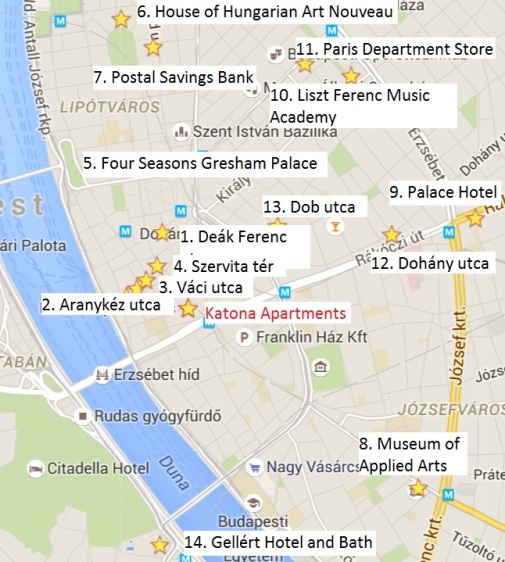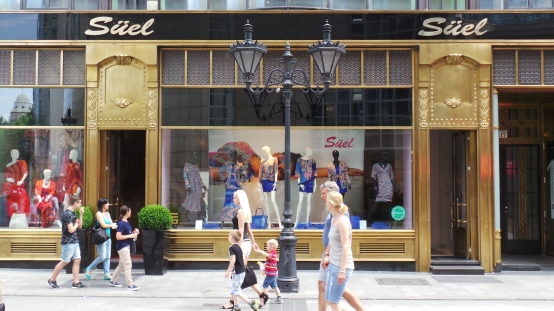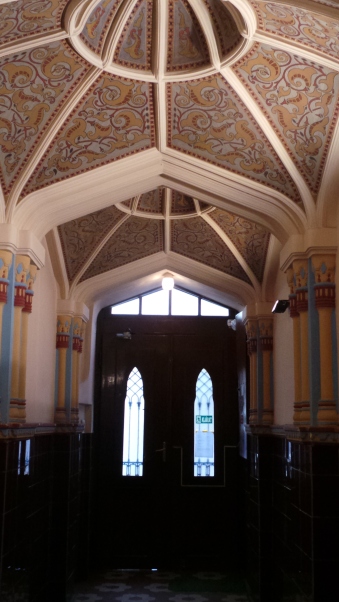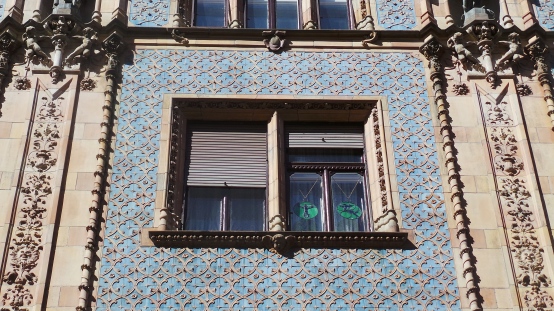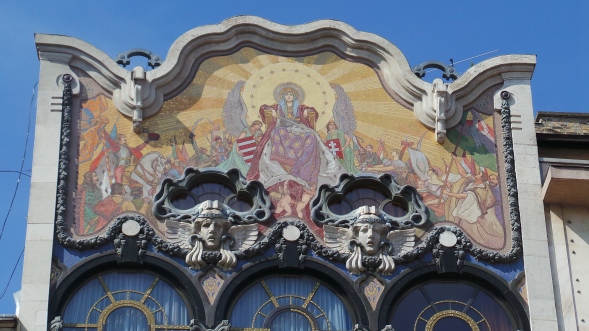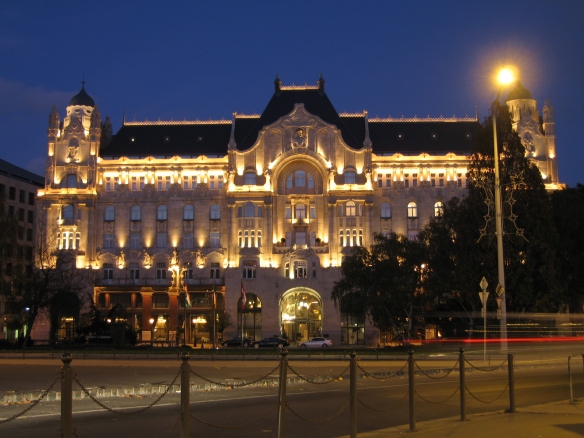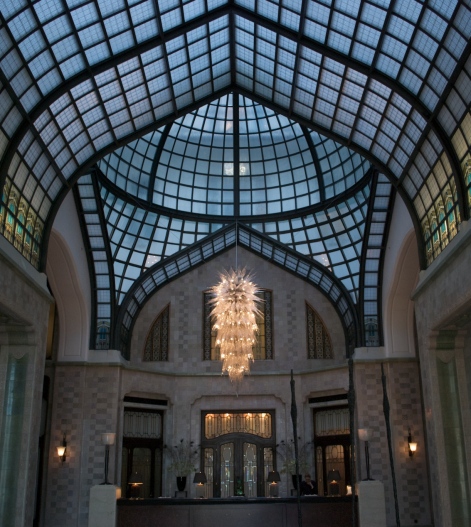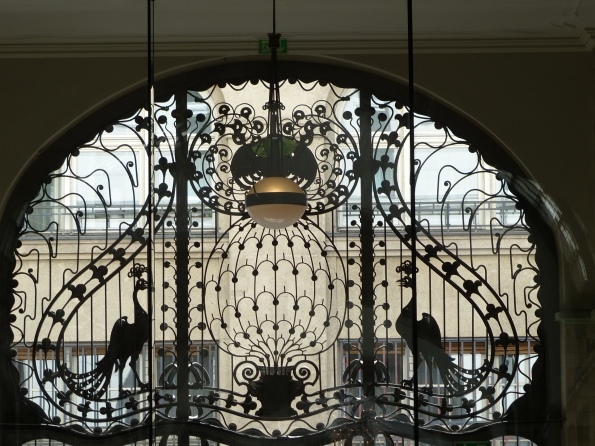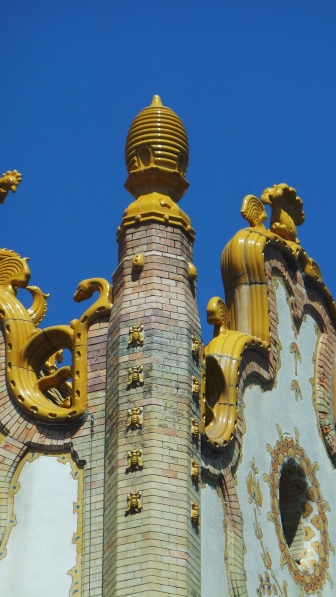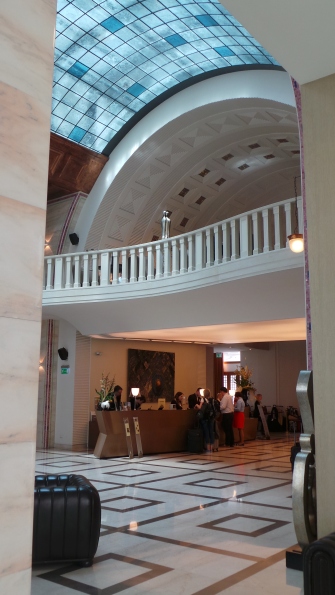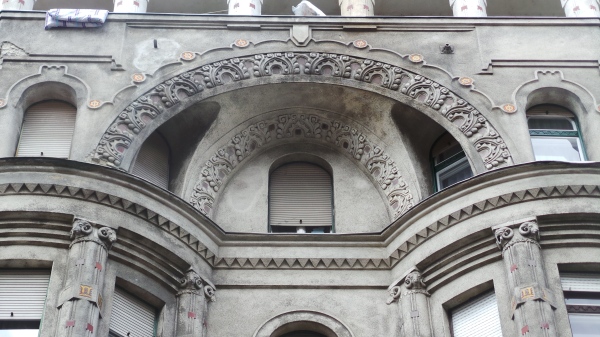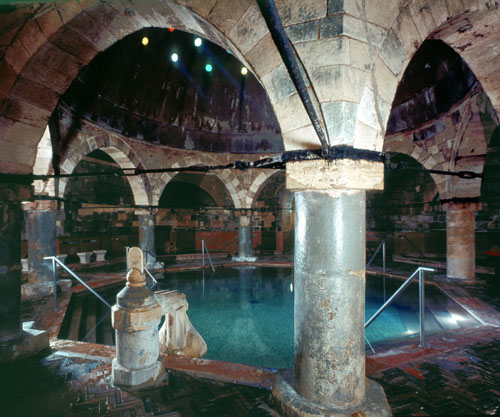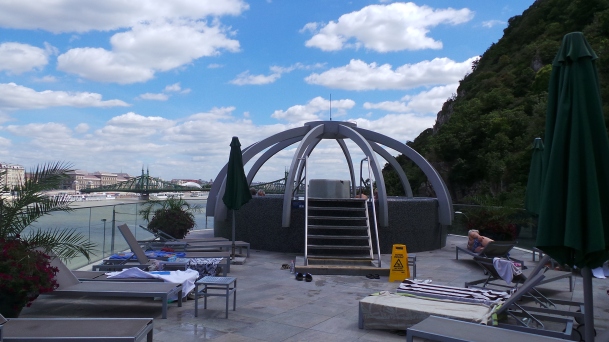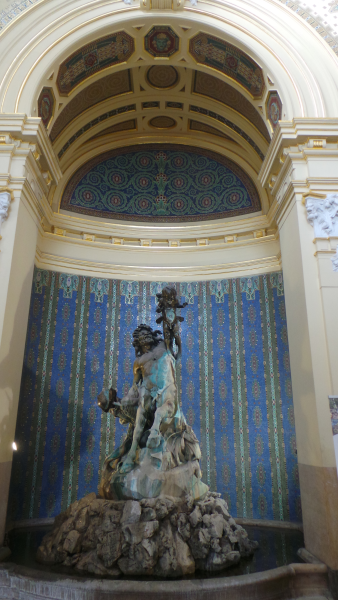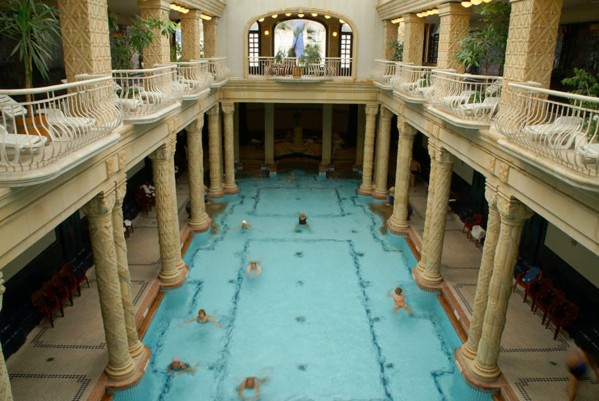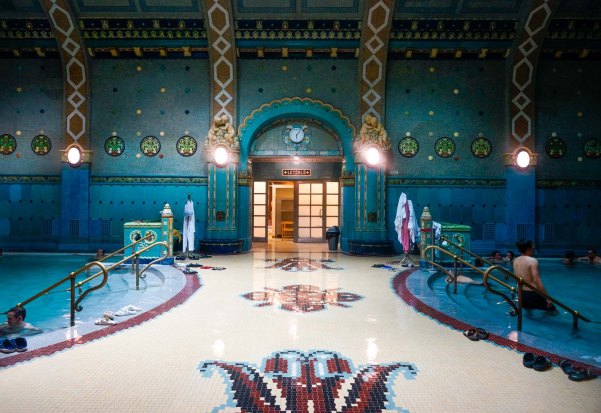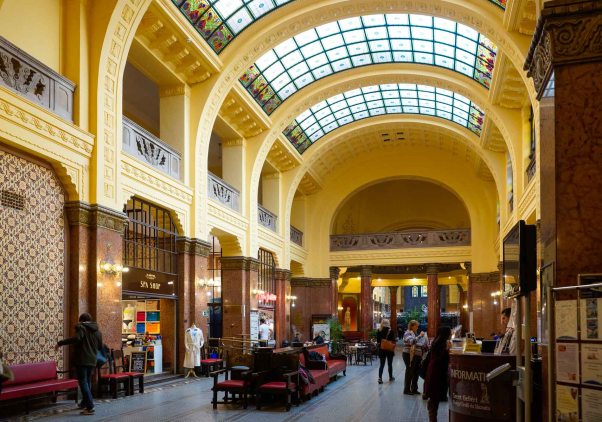7
Do you have a favourite style of visual arts? Mine is Art Nouveau.
This is an art movement that was most popular during the turn of the 20th century – also known as Secession or Jugendstil style. Artists who followed this style wanted to separate themselves from contemporary academic art.
The architects, painters, sculptors and handicraftsmen often used floral or geometric patterns, undulating building ornamentation, bright colours and gold in their work. They also preferred soft, round shapes instead of right angles.
For art and architecture lovers I have collected a list of some of the awesome Art Nouveau buildings in the center of Budapest.
This is definitely not a complete list of all the Art Nouveau in in the city but I have included just a few of my absolute favourites.
|
|
1. Residential Building – Deák Ferenc utca 17.
One of my favourite buildings is opposite the Kempinski Hotel. It is a late Art Nouveau building with huge metal and glass surfaces on the facade; this is specific to the department stores built at the beginning of 20th century, and its cupolas have characteristics of the baroque style.
2. Residential building – Aranykéz utca 2.
Undoubtedly one of the most striking elements of the building is the tower with arabesque motifs on the corner of Aranykéz and Régiposta streets.
I was lucky enough to get into this residential building and was able to admire the fancy doorway, look up to the painted vault, wall tiles and columns, and look down upon the patterned floor.
3. Thonet House, Residential Building – Váci utca 11/A.
The uniquely designed early Art Nouveau facade (1888-1890) is covered with tiles decorated with pyrogranite (a type of ornamental ceramic). The wrought iron balconies, the original wooden portals and the statues make this building distinctive.
4. Török-bankház: Szervita tér 3.
Its prodigious ornament can hardly be seen as it is high up on the top.
In the center piece sits Virgin Mary, the patron of Hungary with the Hungarian holly crown on her head and the sword of the first Hungarian king, Saint Stephen, in her hand.
On her left and right there are two angels standing and in the background the nobility and the common people are marching. The golden colour dominates in this masterpiece.
5. Four Seasons Gresham Palace – Széchenyi István tér 5-6
This is another wonderful masterpiece of Art Nouveau, on the Pest side of the Chain Bridge, facing Castle Hill and the Tunnel on Buda side.
I find some parts of the building ethereal. Here you can visit the lobby, the lounge area, the bar and the restaurant.
6. Bedő-ház, The House of Hungarian Art Nouveau – Honvéd u. 3.
Although quite small, this collection is a paradise for enthusiasts of this style.
What you should expect: As the building is a collection of furniture, statues, paintings and objects like household items, pottery and clothing of art nouveau style on three floors, it’s rather like a warehouse, not an exhibition. Unfortunately there are no descriptions of items, but if you are a fan of this style you’ll absolutely love it.
The exterior of the building is nicely restored and is one of the most stunning examples of the era. http://www.magyarszecessziohaza.hu/mainen.php
7. Postatakarékpénztár Postal Savings Bank – Hold utca 4.
What a splendid building from the beginning of the Art Nouveau period. It used to be the headquarters of the Hungarian Royal Savings Bank, now it serves as the Hungarian State Treasury. Look for the bees and the beehives on the frontage, they symbolize frugality.
We can discover Hungarian folk art, as well as Asian elements, as seen in the Museum of Applied Arts (Iparművészeti Múzeum).
8. Museum of Applied Arts: Üllői út 33-37.
The Museum of Applied Arts is a masterpiece of Hungarian Art Nouveau. It has many specialities like its enormous dome and its interior, evoking oriental splendour. Observe the tiles with Hungarian ornamentation on the exterior and interior walls as well as the colourful tiles on the roof.
9. Palace Hotel, today Hotel Novotel Budapest Centrum Rákóczi út 43-45
The ceramic ornaments and the very fitting “Palace Hotel” lettering on the facade of this building give a unique appearance.
On the top part of the facade a wooden porch can be seen that references Transylvanian architecture.
The most beautiful part of the interior is the restaurant on the ground floor and you can partially visit other areas of the building too.
10. Liszt Ferenc Music Academy – Liszt Ferenc tér 8.
The exterior is lavishly decorated with frescos, painted glasses and mosaics. Its concert hall is a wonder. After a few years of renovation this Art Nouveau building from 1907 reopened in 2013.
11. Párizsi Nagyáruház / Divat Csarnok: Andrássy út 39.
The city’s first significant department store was opened in 1910 in a late Art Nouveau style.
Recently the building operates as a bookstore and on the first floor there is a wonderful café that used to be a ball room. Every local and tourist should admire its splendour.
In its time it was famous for its astounding sized hall, four floors in height with marble pillars, the gilded staircases and its elevators with glass windows.
Visit its roof top bar. The view is fantastic there.
12. Hungária Fürdő, today Continental Hotel Zara – Dohány utca 42-44.
This awesome building was built in 1908 and 1909 as a multifunctional premise: swimming pool, steam bath, club, office and apartment building. The swimming pool was altered to a cinema already in the 20’s.
After a few decades the building deteriorated so much that there were plans to tear it down leaving behind only the facade. Fortunately, the interior was saved from destruction and now we can admire some parts of the building as it was altered to a hotel.
Pop in to see the Art Nouveau lobby with the prodigious turnstile made of copper and the admirable Zsolnay tiles.
13. Glücksmann House, Residential Building – Dob utca 8.
Built in 1913, this residential building with glazed ceramic tiles (yellow tulip motifs) needs a renovation. It is easy to imagine how beautiful this building once was.
14. Gellért Hotel and Bath – Szent Gellért tér 1.
Completed in 1918, Gellért Bath was the capital’s first luxury facility; it was considered the most modern thermal bath of its time. Back then a small hospital with 30 beds belonged to it.
The arched entrance of the bath opens from the Gellért hill side and the statues there symbolize healing. Inside, the two big thermal pool divisions are richly decorated and the walls are covered with colourful tiles.
From the lobby, which is paved with colourful mosaics, we get to the central hall. Look up and you will see the gallery and the coloured glass windows and when the sun shines in, the cheerful beams of light will appear.
Read more about the bathes.
Contact us: http://katonaapartments.hu/
info@katonaapartments.hu
These topics may also interest you:
Arriving at Budapest Airport - How to Exchange Money and Where to Buy Bus Tickets
Which Bath to Choose in Budapest?
The Amazing Metro Line 1 in Budapest is 120 Years Old
Your Shoes Were Made for Walking: Jewels of Budapest by Foot
Day trip from Budapest to Szentendre
About the authors: Virág and János
Virág, a native of Budapest, and János, who’s been living in the city since 1997 are real fans of the capital of Hungary and try to awake the enthusiasm of others. They are dedicated to helping tourists to make most out of their stay.
Here you can read more about them: http://katonaapartments.hu/


